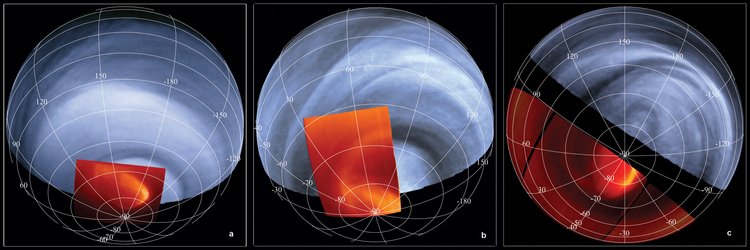

Southern hemisphere of Venus in the ultraviolet
This beautiful, false-colour ultraviolet image of the Southern hemisphere of Venus was obtained by the Venus Monitoring Camera (VMC) on board ESA’s Venus Express on 27 July 2007. It was taken from a distance of 30 000 km from the planet’s surface at a wavelength of 365 nanometres. The planet is seen from the southern hemisphere: the south pole is at the bottom, while equator is at the top.
The shape of the clouds changes dramatically from the equator to the pole. At low latitudes, the cloud shape is spotty and fragmented, a consequence of a vigorous convective movement powered by the radiation of the sun heating the atmosphere itself. The bright lace visible on top of the darker cloud deck is made of freshly formed droplets of sulphuric acid.
At mid latitudes, the convective clouds make way for more streaky shapes indicating that the flow is basically laminar in this portion of the atmosphere.
At high latitudes, the cloud structure appears as a dense, almost featureless haze forming some a ‘polar cap’ on Venus. The dark, circular feature visible at the rightmost edge of the image is one of the dark streaks usually present in the polar region, indicating atmospheric parcels spiralling towards the pole.





